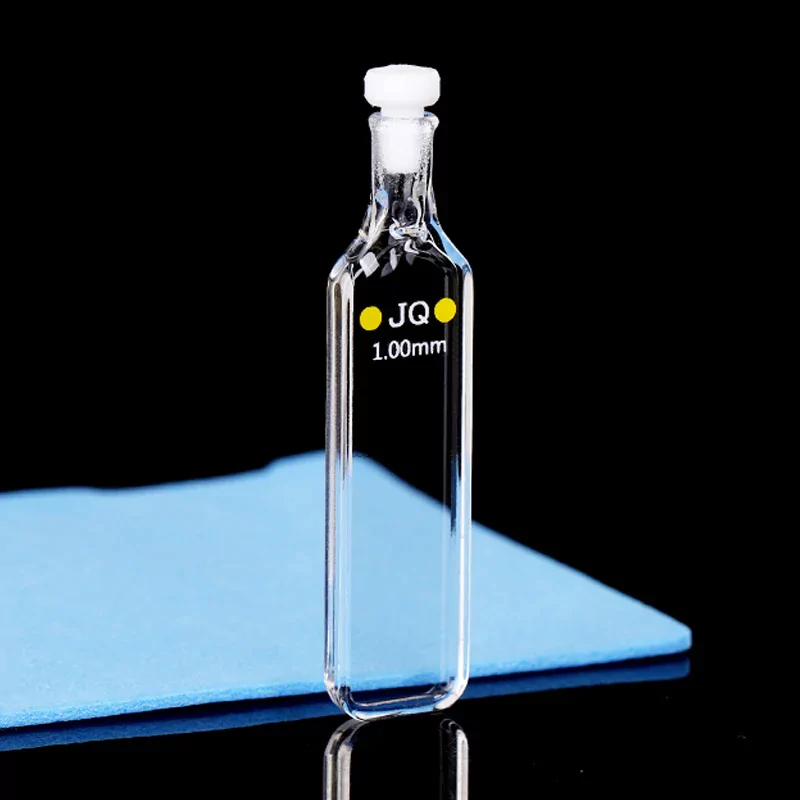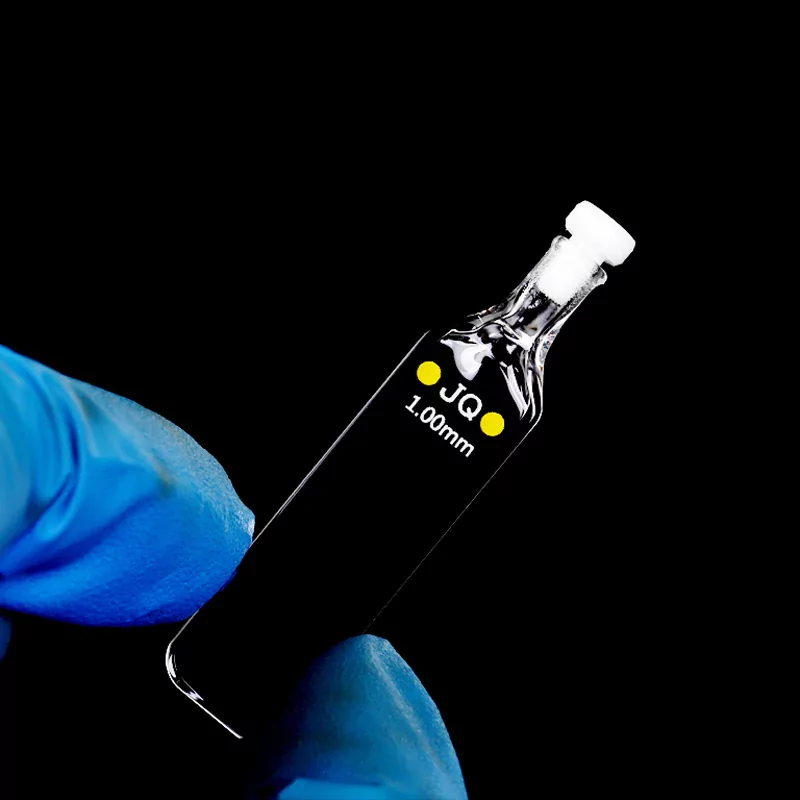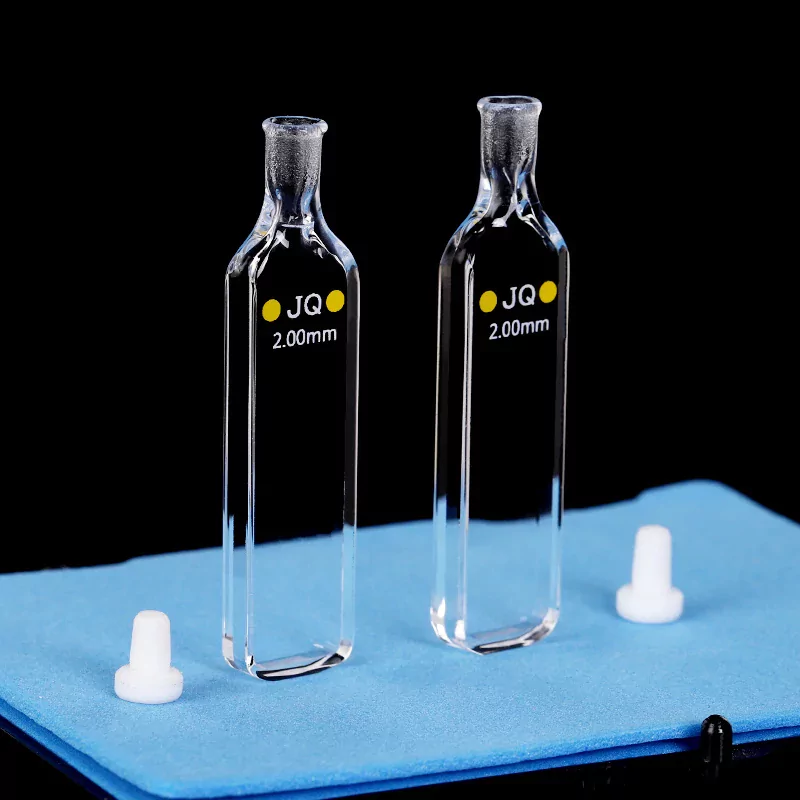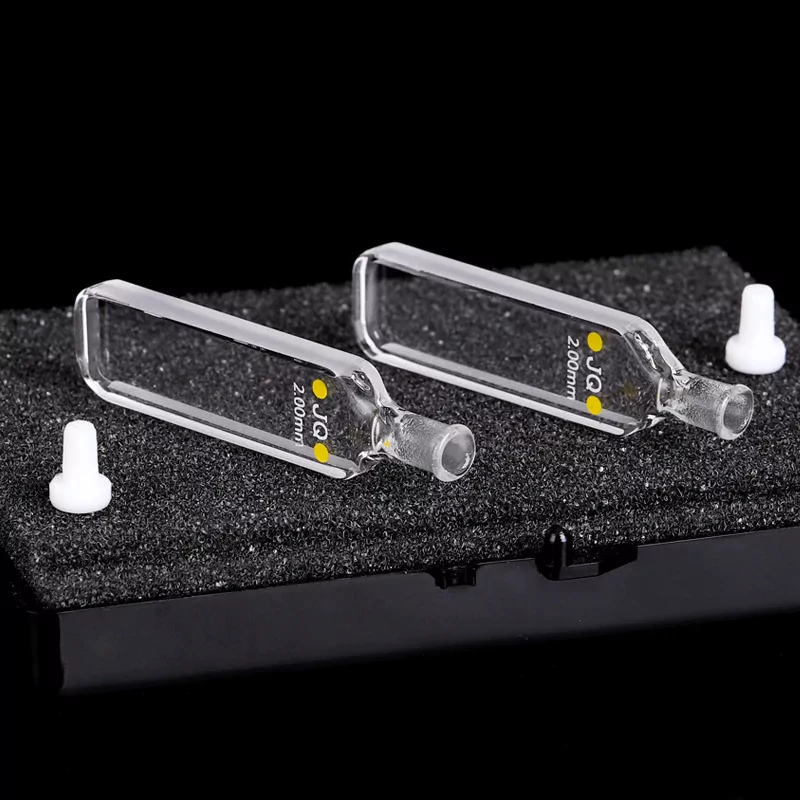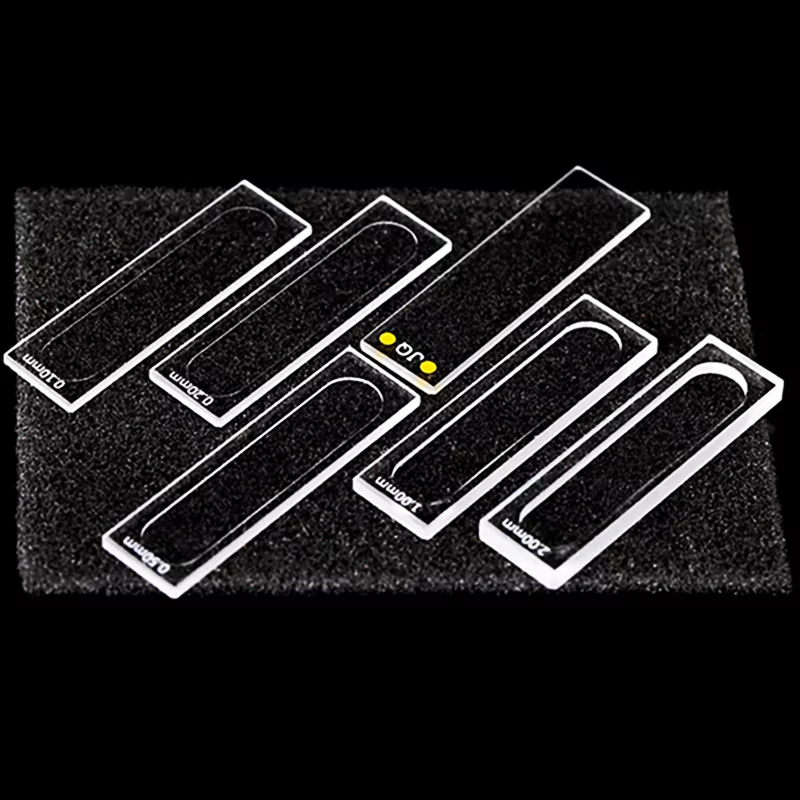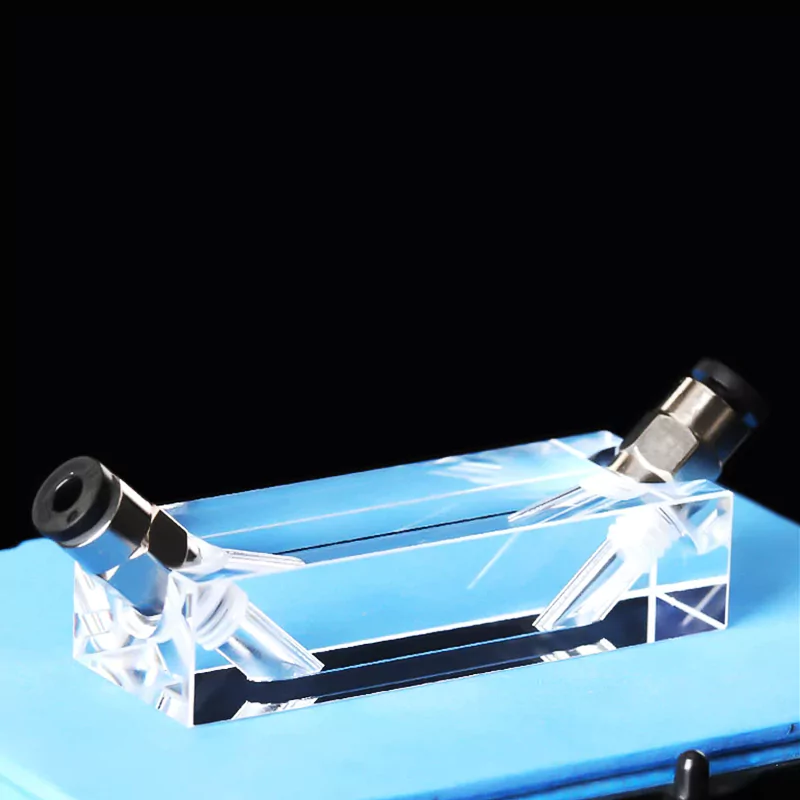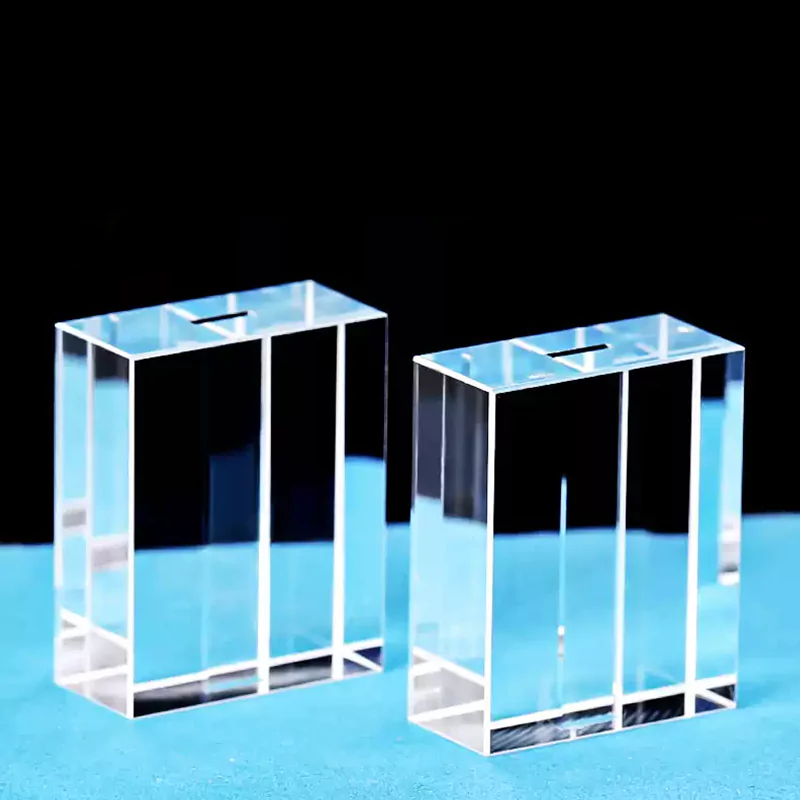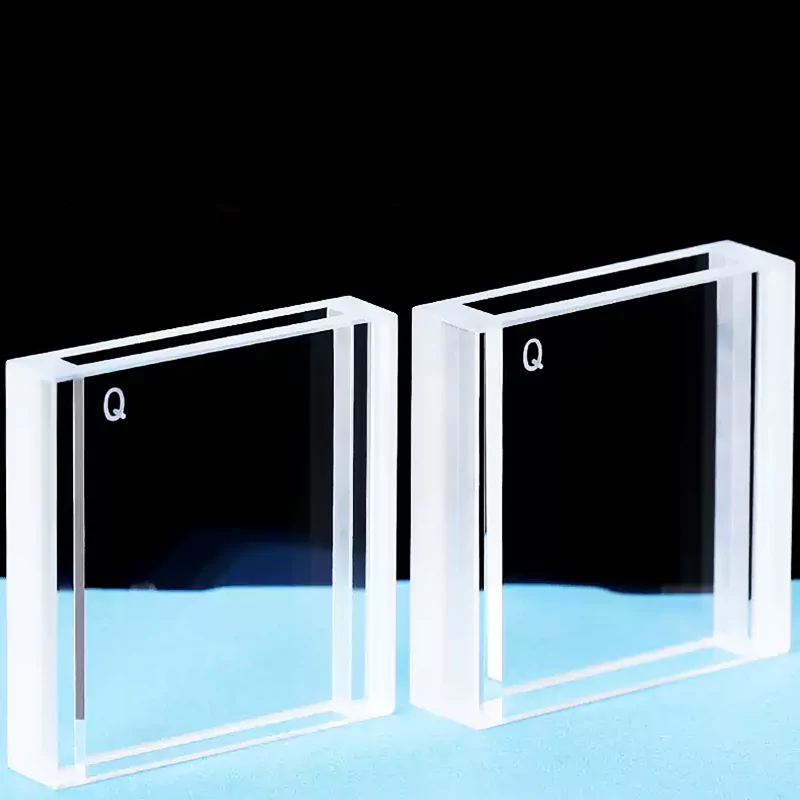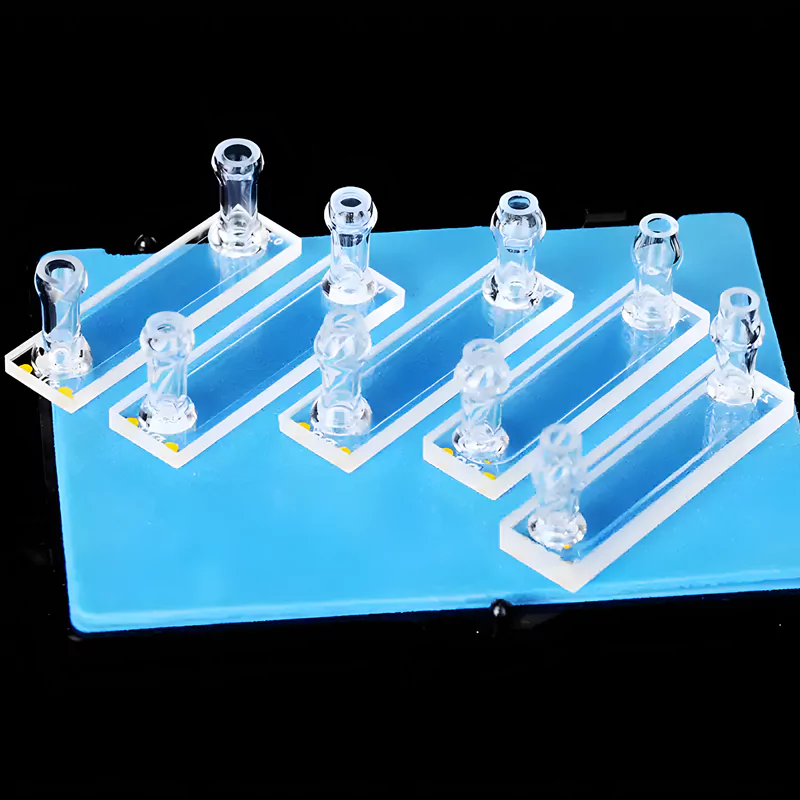- Home
- /
- Types
- /
- Quartz Cuvette
- /
- Quartz UV Cuvette
- /
- Quartz Cuvette Fluorescence UV...
Quartz Cuvette Fluorescence UV Sample Cell with PTFE Stopper -TOQUARTZ®
Featuring 99.98%+ high-purity quartz construction and reliable PTFE sealing technology, these cuvettes deliver consistent results for analytical instrumentation, research laboratories, and diagnostic applications.
Features of Fluorescence UV Quartz Cuvettes with PTFE Stoppers
TOQUARTZ® fluorescence UV quartz cuvettes with PTFE stoppers combine premium optical properties with secure sample containment, delivering reliable performance for sensitive spectroscopic applications. Each cuvette is manufactured from high-purity quartz to ensure maximum transmission across the UV-Visible spectrum.
Optical Properties
- 99.98%+ SiO₂ purity for maximum light transmission
- Wide wavelength range (200nm-2500nm) covering UV and visible spectrum
- Over 80% transmittance in paired testing across the spectral range
- Precision polished optical surfaces minimizing light scatter
Structural Advantages
- High structural strength with fracture modulus >350MPa
- Chemical resistance to acids, bases, and most solvents
- Temperature stability up to 1100°C
- PTFE stopper provides chemical-resistant, airtight sealing
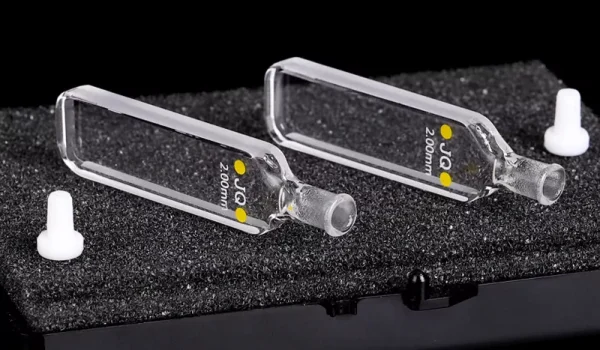
- Wide Spectral Range (200-2500nm)
- Thermal Stability (1100°C+)
- Custom Design Support
Technical Specifications & Dimensions of
Fluorescence UV Quartz Cuvettes with PTFE Stoppers
Technical Specifications of Fluorescence UV Quartz Cuvettes with PTFE Stoppers
| Parameter | Specification |
| Material | High-purity quartz (+99.98% SiO₂) |
| Thermal Expansion Coefficient | 5.5×10⁻⁷ /°C |
| Thermal Conductivity | 120-160 W/m.K |
| Stopper Material | Optical polishing on windows |
| Surface Finish | Optical polish, minimal scatter |
| Optical Quality Control | 100% visual inspection |
Size of of Fluorescence UV Quartz Cuvettes with PTFE Stoppers
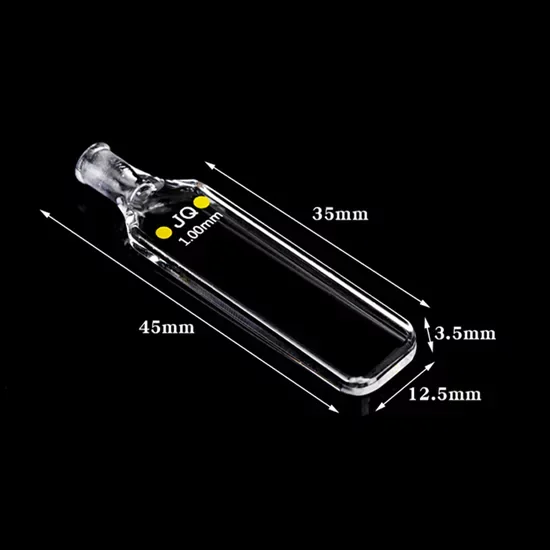
| Model | Description | Wavelength | Path Length | Volume | Transmittance | Outline Dimension |
| AT-BSM-021 | 350μl Fluorescence Quartz UV Cuvette with PTFE Stopper | 200nm-2500nm | 1mm | 350μl | >80% (Paired Testing) | 12.5×3.5x45mm |
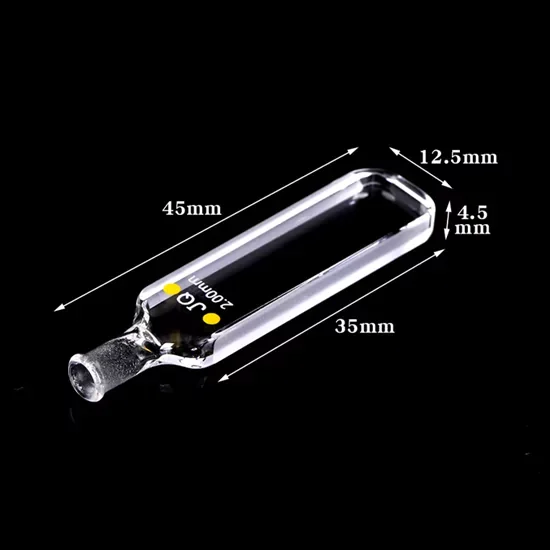
| Model | Description | Wavelength | Path Length | Volume | Transmittance | Outline Dimension |
| AT-BSM-023 | 700μl Fluorescence Quartz UV Cuvette with PTFE Stopper | 200nm-2500nm | 2mm | 700μl | >80% (Paired Testing) | 12.5×4.5x45mm |
TOQUARTZ® Solving Analytical Challenges with
Fluorescence Quartz Cuvette with PTFE Stopper
Fluorescence UV Quartz Cuvettes with PTFE Stoppers in Biological Research
Key Advantages
-
Ultra-low background fluorescence
Background signal <0.002 AU at 280nm minimizes interference in protein quantification. -
Path length deviation control within ±0.01mm
Ensures consistent excitation volume for reproducible fluorescence intensity in DNA assays. -
Evaporation rate <0.5% over 4 hours at 25°C
PTFE stopper maintains sample concentration stability during long kinetic studies.
TOQUARTZ® solution
A research team conducting 3-hour protein folding kinetics at 25°C observed 6% signal drift using standard cuvettes due to evaporation.
TOQUARTZ® cuvettes with PTFE stoppers reduced drift to <1%, attributed to the <0.5% evaporation rate over 4 hours.
This improvement is not only due to the stopper but also the tight dimensional tolerance (±0.01mm), which ensures uniform excitation volume across replicates.
Thus, the solution lies in the synergy between sealing integrity and optical path precision.
Fluorescence UV Quartz Cuvettes with PTFE Stoppers in Environmental Analysis
Key Advantages
-
Acid resistance validated in 5% HNO₃ for 24h
No surface etching or transmittance loss after immersion in acidic water samples. -
PTFE stopper leakage rate <0.1μL/hour
Prevents VOC loss in trace benzene detection during 12-hour batch analysis. -
Cross-contamination risk <0.05% between runs
Surface adsorption rate <0.01μg/cm² ensures clean baseline in sequential fluorescence scans.
TOQUARTZ® solution
A German environmental testing laboratory previously experienced 12% sample loss through evaporation during overnight sample queuing, affecting detection limits for trace PAHs (polycyclic aromatic hydrocarbons).
Implementing TOQUARTZ® fluorescence UV quartz cuvettes with PTFE stoppers reduced evaporation to negligible levels, improving detection limits by 0.8 ng/L and ensuring regulatory compliance for critical water quality monitoring.
Fluorescence UV Quartz Cuvettes with PTFE Stoppers in Analytical Instrumentation
Key Advantages
-
Dimensional repeatability within ±0.05mm across batches
Enables robotic arm alignment accuracy >99.8% in automated analyzers. -
PTFE stopper insertion force 1.2±0.3N
Optimized for automated loading without damaging sealing or cuvette neck.
TOQUARTZ® solution
A Japanese analytical instrument manufacturer reported a 9% reduction in calibration failures after switching to TOQUARTZ fluorescence UV quartz cuvettes with PTFE stoppers in their automated fluorescence analyzers. The dimensional consistency (±0.1mm) and reliable PTFE sealing eliminated sample leakage issues that previously affected instrument reliability, reducing warranty service calls by approximately 25% and improving customer satisfaction ratings.
Customization Services for TOQUARTZ®
Fluorescence UV Quartz Cuvettes with PTFE Stoppers
Custom Dimensions
• Non-standard path lengths
• Custom internal volumes for sample conservation
• Special heights for specific instrument compatibility
• Micro-volume designs for precious samples
Optical Modifications
• Black-walled options to reduce light scatter
• Multi-window designs for 90° fluorescence
• Special surface treatments for reduced adsorption
• Z-dimension optimization for beam height
PTFE Stopper Variations
• Custom-fitted stoppers for perfect sealing
• Flow-through stopper designs with ports
• Modified shapes for specific instrument compatibility
• Color-coded stoppers for sample identification
TOQUARTZ® Customization Design Process
Requirements Consultation
TOQUARTZ® engineering team discusses your application needs, sample volumes, measurement parameters, and instrument compatibility requirements.
Design Proposal
We provide technical drawings and specifications for your custom fluorescence UV quartz cuvette with PTFE stopper design, including material recommendations.
Prototype Production
For new designs, we can create prototype units for testing and validation in your specific application before full production.
Production & Quality Control
Once approved, we manufacture your custom cuvettes with comprehensive optical testing and dimensional verification.
Usage Guide of Fluorescence UV Quartz Cuvettes with PTFE Stoppers
Handling and Sample Loading
- Always handle cuvettes by the non-optical sides or top edges to prevent fingerprints on optical windows.
- Fill cuvettes to appropriate volume (1mm path: 350μl, 2mm path: 700μl) using a micropipette.
- Insert PTFE stopper with gentle pressure, ensuring it seals without forcing.
- Check for air bubbles by gently tapping or inverting cuvette; remove if present as they interfere with measurements.
Cleaning and Maintenance
- Remove PTFE stopper before cleaning. Rinse immediately after use with appropriate solvent.
- For routine cleaning, use mild detergent (2% solution), followed by thorough rinsing with ultrapure water.
- For stubborn residues, soak in 5% HCl or HNO₃ solution, then rinse thoroughly with ultrapure water.
- Dry with filtered air or nitrogen gas stream. Never use abrasive materials or tissues on optical surfaces.
Storage and Lifetime Optimization
- Store clean, dry cuvettes in original packaging or dedicated storage containers to prevent dust contamination and physical damage.
- Store PTFE stoppers separately from cuvettes during long-term storage to prevent sticking or deformation.
- Periodically inspect optical surfaces using a light source against dark background to check for scratches or residues.
- Avoid prolonged exposure to extreme pH (<1 or >14) or fluoride solutions which can gradually etch quartz surfaces.
- Replace PTFE stoppers if they show signs of wear or no longer provide adequate sealing.
Need Technical Assistance with Fluorescence UV Quartz Cuvettes?
Get expert guidance on material selection, path length optimization, and PTFE stopper configurations for your specific application.
Why Partner with TOQUARTZ
Direct Factory Advantage
As a direct manufacturer, we can cut out the numerous intermediate links.
Engineering Expertise
Technical team guides clients from material selection to design optimization, translating specs into deliverables.
Flexible Manufacturing
Handling standard & custom orders via small-batch expertise and prototyping rigor to meet urgent deadlines.
Quality
Assurance
Pre-shipment 3-step validation:
1. dimensional accuracy,
2. material purity ,
3. performance thresholds
Global Supply Chain
Reliable global logistics to industrial hubs (DE/US/JP/KR priority) with trackable milestones.
Releted Products
As a specialized manufacturer with direct factory capabilities, TOQUARTZ provides both standard and custom quartz solutions with engineering support throughout the specification and implementation process.
FAQ
Q: Why are fluorescence quartz cuvettes used in UV spectroscopy?
A: Fluorescence quartz cuvettes are essential in UV spectroscopy because high-purity quartz offers superior UV transmission (down to 200nm) compared to glass or plastic. Quartz also exhibits minimal auto-fluorescence, ensuring accurate measurements without background interference. The addition of PTFE stoppers prevents sample evaporation and contamination during analysis, which is critical for maintaining sample integrity and measurement repeatability in sensitive fluorescence applications.
Q: What is the fluorescence UV quartz cuvette wavelength range?
A: TOQUARTZ® fluorescence UV quartz cuvettes offer an extensive wavelength range from 200nm to 2500nm. This broad spectrum covers the UV region (200-400nm), visible light (400-700nm), and near-infrared (700-2500nm), making them versatile for multiple spectroscopic techniques. The high-purity quartz material (99.995% SiO₂) ensures consistent transmittance across this range, with no significant absorption peaks that could interfere with spectral analysis.
Q: How to clean fluorescence UV quartz cuvettes properly?
A: For proper cleaning of fluorescence UV quartz cuvettes: 1) Remove PTFE stopper and rinse immediately after use with appropriate solvent (often the same as your sample matrix). 2) For routine cleaning, use a mild laboratory detergent solution (2%), followed by thorough rinsing with ultrapure water. 3) For persistent residues, soak in 5% HCl or HNO₃ solution, then rinse thoroughly. 4) Dry with filtered air or nitrogen gas. Avoid using tissues or wipes directly on optical surfaces as they can cause micro-scratches that scatter light and affect measurement accuracy.
Q: What is the difference between standard and fluorescence UV quartz cuvettes?
A: While standard UV quartz cuvettes typically have two optical windows (for absorbance measurements), fluorescence UV quartz cuvettes often feature four polished optical windows to allow excitation light to enter from one direction and fluorescence emission to be detected at 90° angles. Fluorescence cuvettes with PTFE stoppers provide additional benefits for volatile or sensitive samples by preventing evaporation and contamination. They also typically undergo more rigorous quality control for homogeneity and minimal auto-fluorescence to ensure accurate fluorescence measurements with optimal signal-to-noise ratios.
Q: Why use a PTFE stopper with fluorescence UV quartz cuvettes?
A: PTFE stoppers provide several crucial benefits for fluorescence spectroscopy: 1) They prevent sample evaporation during extended measurements, ensuring concentration stability. 2) PTFE’s chemical inertness makes it compatible with most solvents and reagents without contamination risks. 3) They protect sensitive samples from atmospheric contamination or oxidation. 4) For volatile organic solvents, PTFE stoppers prevent concentration changes that would affect calibration curves. 5) They allow for sample storage and transport between preparation and measurement, particularly valuable for field sampling applications or high-throughput laboratory workflows.
Contact our engineering team for technical consultation and pricing. We’ll help you select the optimal specifications for your application requirements.


